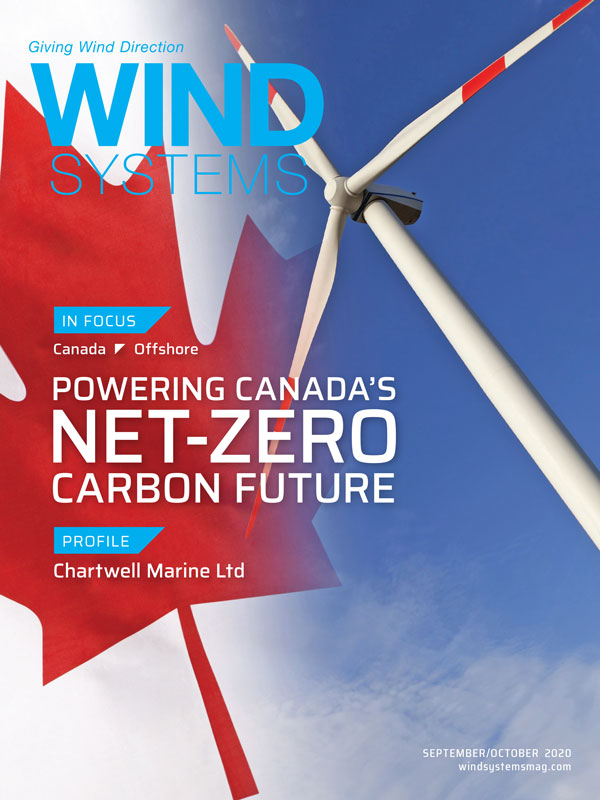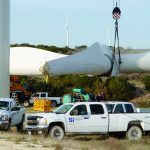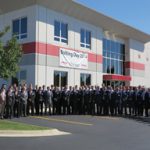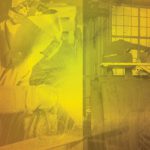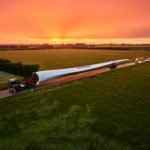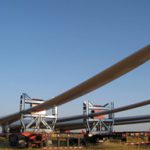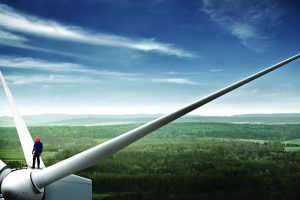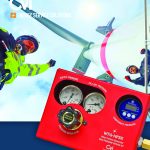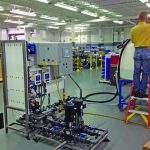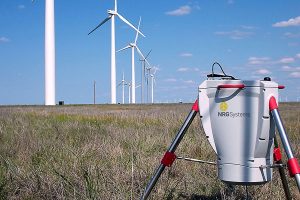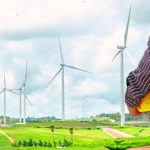The sight of spinning wind turbines off the coast can be a moving example of how human ingenuity can harness the power of nature, but it takes a lot of moving parts to keep those turbines in proper working order.
Case in point: How do you get workers to-and-from those turbines when maintenance is required? After all, a wind farm extends hundreds of meters from the ocean’s surface while being miles and miles from shore.
Vessels designed by the experts at Chartwell Marine have been used to ferry technicians and other workers to wind turbines in Europe for years, and they are now set to be used in offshore wind-energy projects in the U.S.
“As a team at South Boats, we delivered the Atlantic Pioneer, which is the first crew transfer vessel in operation in the U.S.A., working on the Deepwater Wind site for Ørsted,” said Andy Page, managing director of Chartwell Marine. “We’ve built on that background with Chartwell, launching a crew transfer vessel range called the Chartwell 24, which we are seeing significant demand for. We have just delivered one and have a second vessel due for delivery in September or October. In the United States, we have a further Chartwell 24 being built at Blount Boats, which is due for delivery in Q3/Q4 2020, with another vessel prepared for build. Further down the line, we have two more Chartwell 24s that we have just started building in the U.K.”
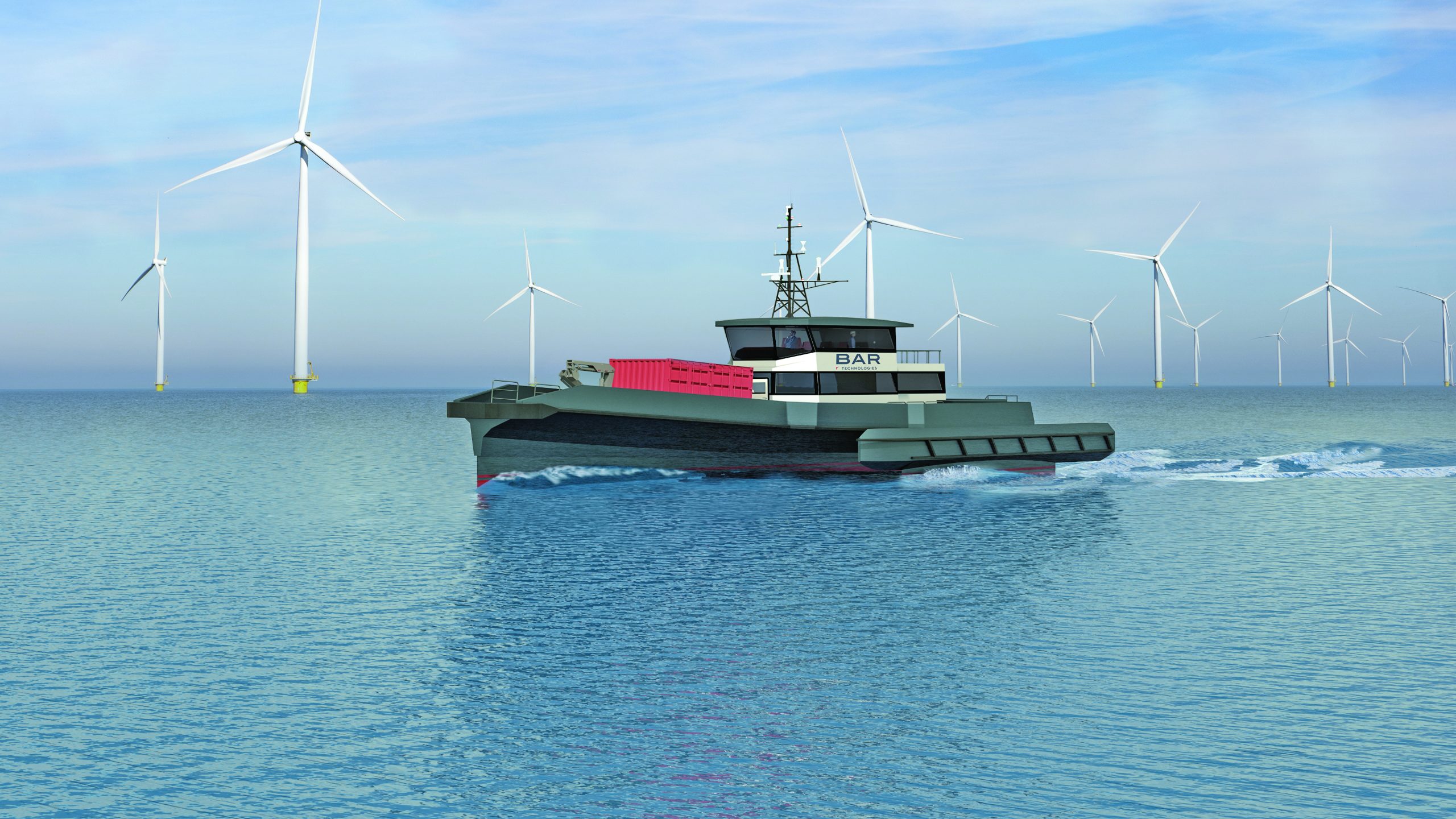
The Chartwell 24
The vessels Page refers to as Chartwell 24s are a range of crew transfer vessels that the company expects to be the leader in the burgeoning offshore wind business in the U.S.
“From a Chartwell perspective, I’m extremely proud of the team for designing the Chartwell 24 — to have come up with a vessel range, which is hybrid-ready, right-whale compliant, ABS approved, under 100 gross tonnage, optionally compliant with EPA Tier 4, and crucially, packaged up to enable a cost effective build in the States,” he said.
It was important to Chartwell that the hybrid vessel have a functional design in order to develop and bring it to the U.S. market, according to Page.
“We have close links to vessel operators — and to turbine manufacturers and offshore wind-farm site owners,” he said. “Given we were building off our experience rather than actually starting fresh, we were able to have various stakeholder group discussions and meetings before we put pen to paper. That collaboration led to us conceptualizing the original hand sketches and drawings — even to this date, the hand sketches are on our website, and they still are very representative of the boat we built.”
Behind the Design
With most technicians used to being transported by larger ships or even by helicopter, it was important the CTV designed by Chartwell Marine be comfortable, as well as functional, according to Page.
“First of all, we have to design a vessel which has world-class seakeeping,” he said. “We want to limit seasickness as much as possible to maximize technician availability, so ensuring a comfortable ride is crucial. We ensure that the environment within feels comfortable, which is why we design the vessel with onboard technology, allowing personnel to travel out to site with iPads, laptops and gaming/video equipment. There are ample household sockets and USB sockets, together with onboard high-quality lighting, comfortable seats, and other modern, luxurious features.”
In operational terms, Page said it’s also important that the CTV can push onto the tower, making a good propulsion arrangement and fender connection vital. This also includes having plenty of space for cargo and a variety of payloads, whether it’s fuel transfer for running a hose up the turbine for generator refueling or single payloads of spare parts, tools, and other provisions.
“We could even be taking provisions to an offshore platform, substation, or other offshore asset to keep it running,” he said. “These are the core activities, and it’s packaging that all together that makes a successful CTV.”
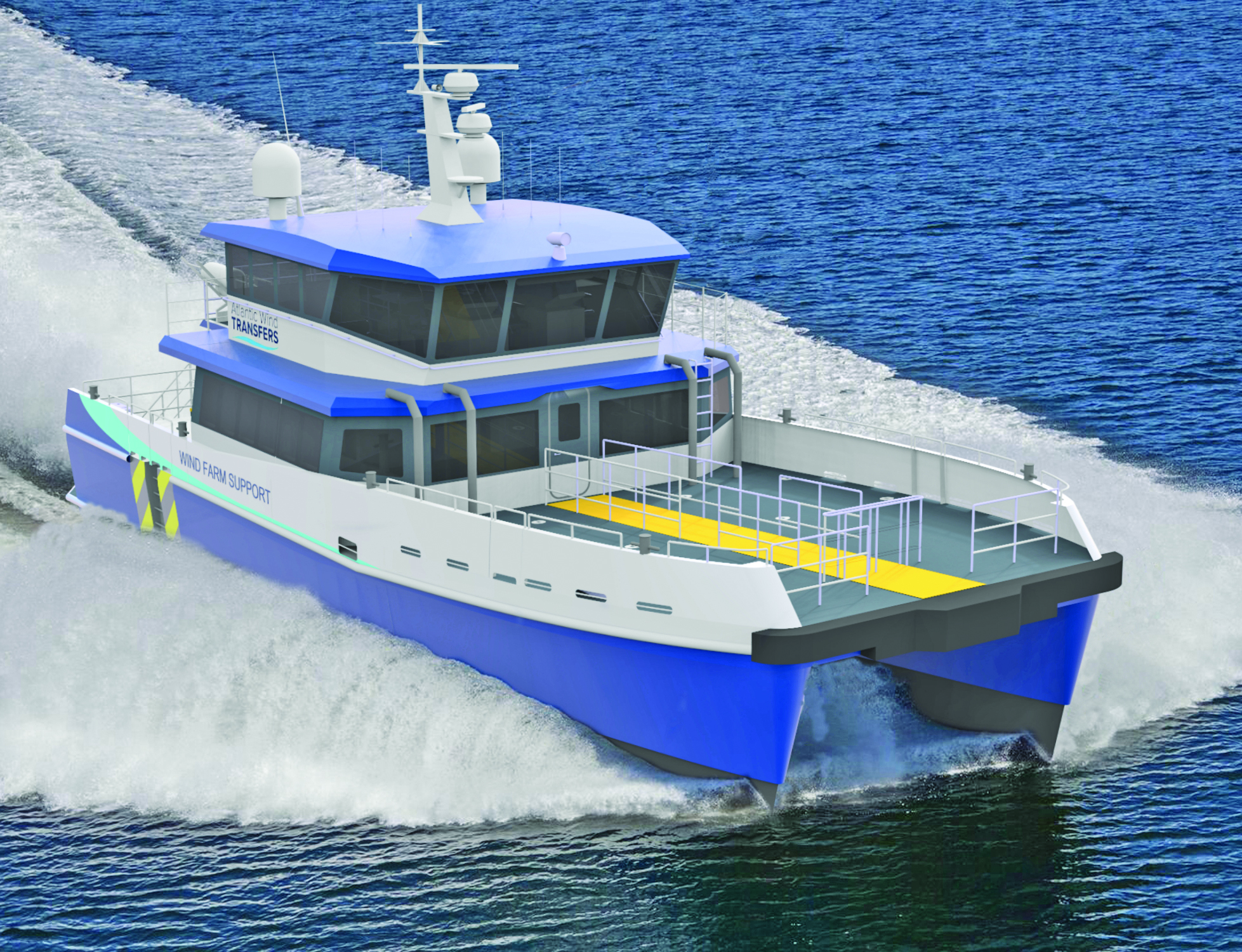
Essentially, Chartwell wants to offer a memorable vessel, says Page.
“We want to create something that people respect and aesthetically appreciate, which is not always that simple with a work boat,” he said. “We have a mission statement to ensure our vessels are efficient, so we’re constantly thinking about our end user profile and how customers will operate that vessel in order to maximize efficiency — both in terms of the propulsive efficiency and emissions, and ensuring that we deliver best-in-class value for money.”
Sustainable Innovation
But most importantly, Page emphasized that Chartwell strives to ensure its design and operation are sustainable.
“Almost all of our vessels are of aluminum construction, which can be recycled at end-of-life and can be rebuilt into either another boat or into something completely different,” he said. “When we’re designing and integrating the propulsion system, we are able to offer our customers solutions such as hybrid, electric integration, and foilborne technology.”
It’s Page’s hope that Chartwell’s vessels become more of a multipurpose tool as the wind industry pushes farther offshore.
“The boats have grown physically in size, and the number of technicians we’re carrying on board the vessels has also increased,” he said. “Due to this, we are constantly innovating and staying in touch with developers. There’s a strong current of debate about sleeping offshore, about working for longer hours, and integrating with other offshore assets, be it SOVs or offshore substations. There’s also been significant development in both the transfer arrangements and the vertical height of the vessels.”
And some of these developments already are being implemented.
“There is a desire from the wind-farm owners to get as much out of the vessel as possible,” Page said. “It might be that, for certain sites, the boat would do a 12-hour run, coming back, changing crew, and going out again with different personnel. Alternatively, it might be that the boat stays offshore for the whole 24 hours, and the crew sleeps on the SOV or on an offshore substation, using a rotation system where technicians switch over.”
Understanding Customer Needs
With those factors in mind, Chartwell approaches its customer base with a desire to understand its requirements, according to Page.
“For offshore wind, the clients in Europe are typically vessel owners already in their specific market,” he said. “In the U.S., most of the operators are from a vessel-operating background, but they’re either from a fast-ferry world or from a tugboat tradition. The fast-ferry operators are used to traveling at high speed, but they’re normally used to a fixed route — A to B — and, obviously, their clientele is quite different, so working with them is very much about explaining the changes in payload and operational profile. A ferry usually has the exact same payload. Although the number of passengers changes, the fuel levels and cargoes vary little.”
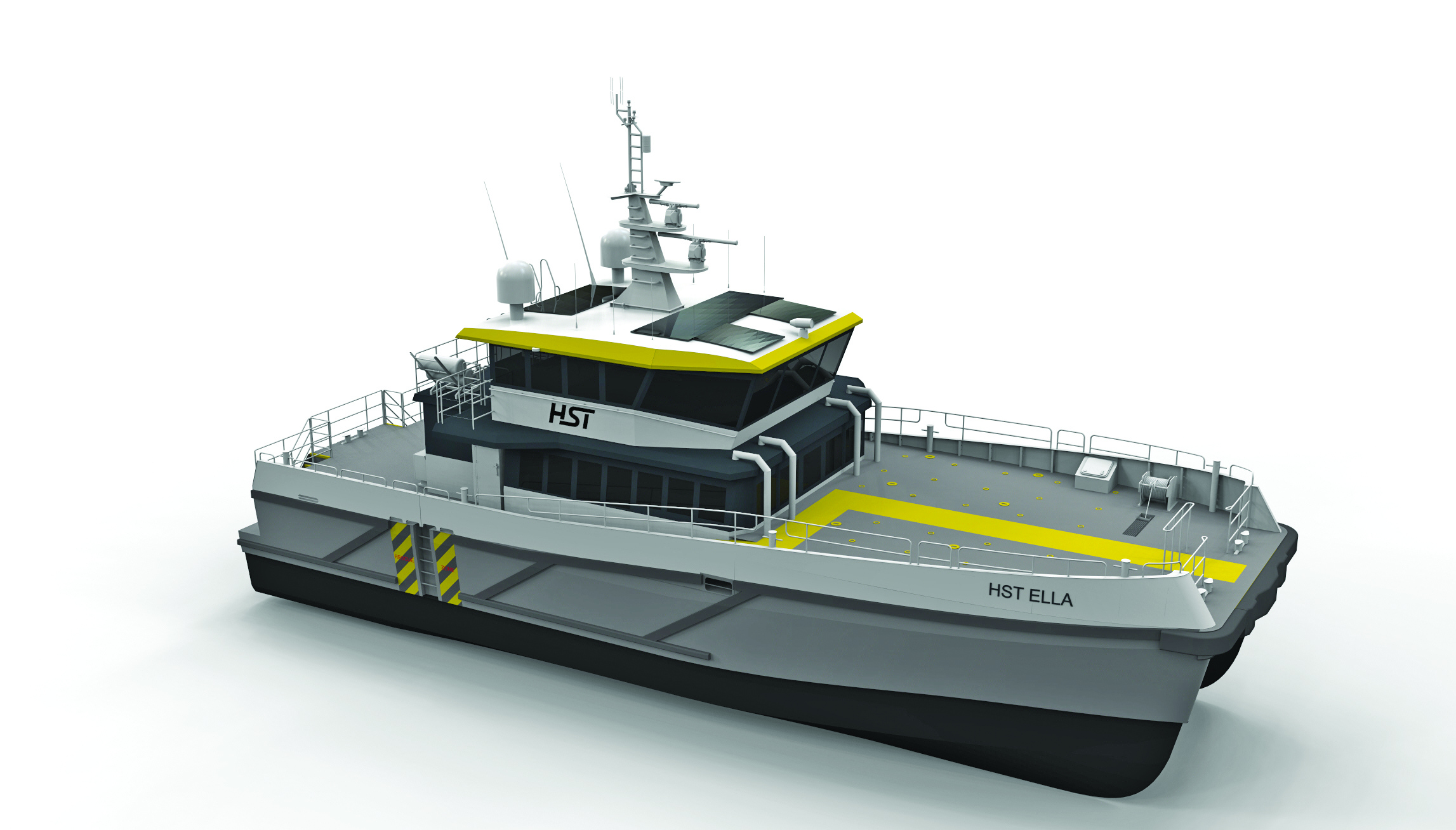
It’s important for Chartwell to be able to understand and adapt to a customer’s way of operating while engaging them on what to expect when moving to an offshore wind scenario, according to Page.
“For a ferry operator, the process of pushing onto an offshore structure is not a normal part of operations,” he said. “They would come alongside, and dock it. In this case, we push the bow on, and keep the thrust on to maintain the boat there. We work with them to explain and develop that skill. Tugboat operators are used to pushing on to assets, but they’re not accustomed to high-speed operations. As a team, we’re forward thinking, and always ensure we understand the user’s experiences. It’s a balance between listening and absorbing what they know and what experiences they can bring to us — especially in terms of their knowledge of working on the U.S. seas — and us providing them with our guidance and understanding of what’s happened in Europe.”
Big developments in a short timeChartwell Marine has made great strides in the offshore transport industry in its almost three years in existence. In that short time, the company has grown from a team of two to a team of 10. Their core background in high-speed, light, small craft of aluminum or composite construction made Chartwell ideally suited to designing vessels for the offshore wind industry. The company’s continued developments have pushed Chartwell into other elements of offshore wind including SOV watercraft, SATVs, and higher-speed, long-distance offshore craft.
And as offshore grows in the U.S., Page expects transporting technicians will become even more of a need as sites are built farther offshore with fixed and semi-fixed structures.
“Working with operators to safely and efficiently transport people is going to be important,” he said. “Definitely in Europe, and likely in the States, there will be less reliance on helicopters. I think we’re going to have more requirements for high-speed, safe, waterborne travel to transport personnel and then enable them to sleep offshore and carry out tasks. Then, of course, we need to try and electrify these solutions by using the energy that we’re producing offshore rather than filling up our boat with diesel. We should use the energy we’ve just made to power our vessels.”
Chartwell Marine expects a huge amount of development in that area, so Page points out that Chartwell will need to have the right products to support that.
“We have the Chartwell 24, which is already working as a hybrid platform, and then recently, we’ve partnered with a company called BAR Technologies to design a foilborne, 30-meter vessel and a 50-meter platform,” he said. “With those two assets, we will have a ‘Swiss-army-knife arrangement,’ utilizing the foilborne 30-meter, a 50-meter vessel aimed at longer, more distant voyages, and then a general all-round workhorse in the form of the Chartwell 24. I think with that fleet in our offering, we’ll be able to cater for the full range of developer and operator needs for wind energy on the U.S. East Coast.”



















